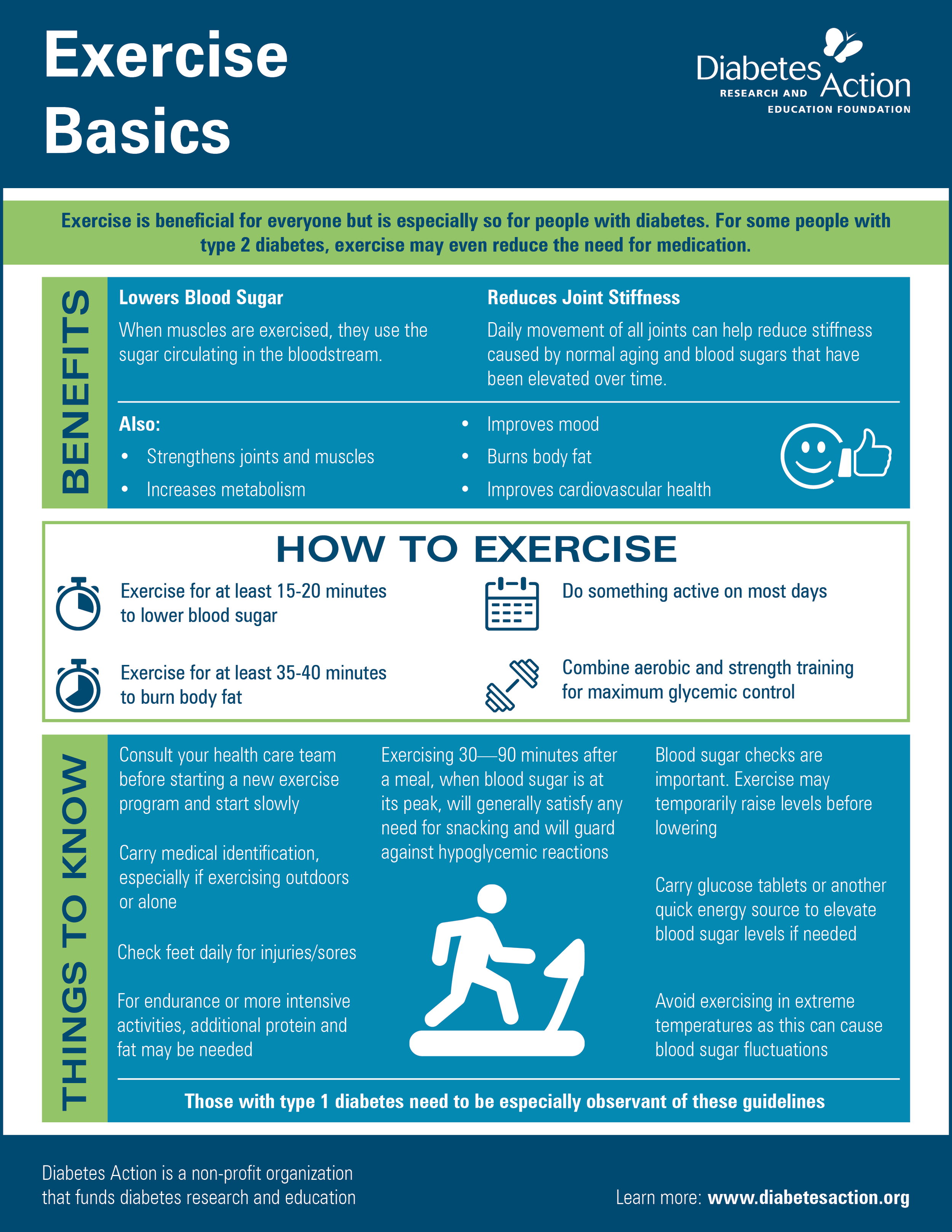
Exercise
Exercise Basics
Exercise is beneficial for everyone but is especially so for people with diabetes. For some people with type 2 diabetes, exercise may even reduce the need for medication.
Benefits
Lowers blood sugar - When muscles are exercised, they use the sugar circulating in the bloodstream
Reduces joint stiffness - Daily movement of all joints can help reduce stiffness caused by normal aging and blood sugars that have been elevated over time
Strengthens joints and muscles
Increases metabolism
Improves mood
Burns body fat
Improves cardiovascular health
How to Exercise
Exercise for at least 15-20 minutes to lower blood sugar
Exercise for at least 35-40 minutes to burn body fat
Do something active on most days
Combine aerobic and strength training for maximum glycemic control
Things to Know
Consult your health care team before starting a new exercise program and start slowly
Carry medical identification, especially if exercising outdoors or alone
Check feet daily for injuries/sores
For endurance or more intensive activities, additional protein and fat may be needed
Exercising 30—90 minutes after a meal, when blood sugar is at its peak, will generally satisfy any need for snacking and will guard against hypoglycemic reactions
Blood sugar checks are important. Exercise may temporarily raise levels before lowering
Carry glucose tablets or another quick energy source to elevate blood sugar levels if needed
Avoid exercising in extreme temperatures as this can cause blood sugar fluctuations
Those with type 1 diabetes need to be especially observant of these guidelines

